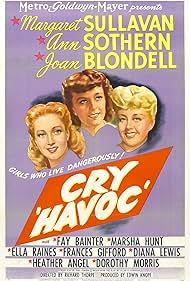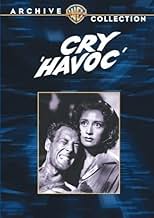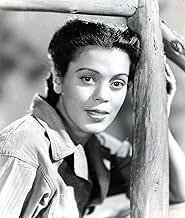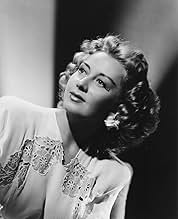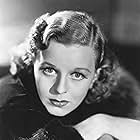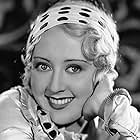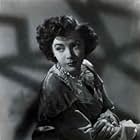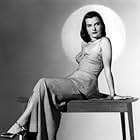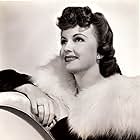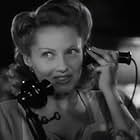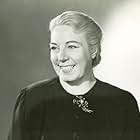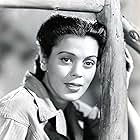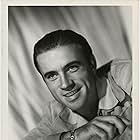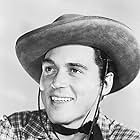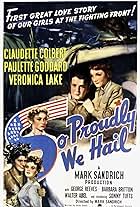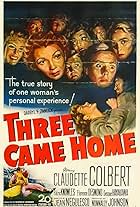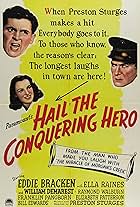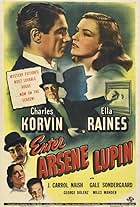IMDb RATING
6.9/10
1.3K
YOUR RATING
A chronicle of the experiences of a mixed group of Army hospital volunteers stationed in Bataan during World War II.A chronicle of the experiences of a mixed group of Army hospital volunteers stationed in Bataan during World War II.A chronicle of the experiences of a mixed group of Army hospital volunteers stationed in Bataan during World War II.
George Beban Jr.
- Dying Man
- (uncredited)
William Bishop
- Soldier
- (uncredited)
Bill Cartledge
- Soldier
- (uncredited)
Russ Clark
- Doctor
- (uncredited)
Richard Crane
- Soldier
- (uncredited)
- Director
- Writers
- All cast & crew
- Production, box office & more at IMDbPro
Storyline
Did you know
- TriviaJoan Crawford was offered the lead role but turned it down, saying "It should have been called 'The Women Go to War.'" Her part was played by Joan Blondell.
- GoofsWhen the cook enters with the food; she hands a tray of corn beef hash to the volunteer sitting on the left of Pat Conlin and she starts serving herself first. But on the next shot while she is still serving herself; Conlin now has food on her plate when before it was empty. Then on the following shot when the bombs start dropping, Conlin's plate is empty again however she did not eat anything.
- Quotes
Sadie - Cook: Horse meat, mule meat, monkey meat. What's the difference?
- ConnectionsReferenced in The Bill: Cry Havoc (1991)
- SoundtracksThe Battle Hymn of the Republic
(1861) (uncredited)
Music by William Steffe (circa 1856)
Variations in the score often
Featured review
WWII curiosity with -an all female cast, while those men who do briefly appear are wounded servicemen dependent on the women. The girls are nurses in a field hospital in the Phillipines just as the islands are falling to the Japanese. They're volunteers recruited at the last minute as the bombs are falling. So we wonder how well these comely civilians in their mascara and lipstick will perform under extreme battlefield conditions.
Good cast. But somehow the movie doesn't live up to the material's potential. As I see it, the problem lies with director Thorpe who films the dramatics from an impersonal distance as if it were still the stage play from which the movie was adapted. With the basically single set where the girls live, there's not much room to move about. So when the bombs fall or one of the girls freaks out, close-ups of personal reactions are needed, not a continuing group scene that disperses the emotion. There's a ton of dramatic material to engage with here, but too much is allowed to impersonally slip by.
Nonetheless, it is an entertaining cast, especially the two dames, Blondell and Sothern. They're natural rivals with their sassy wisecracking that keep the audience amused amid the grimness. Sullavan with her husky voice and domineering demeanor makes an unusual screen presence, as does the rail-thin, sharply intelligent Marsha Hunt. I just wish the Japanese planes had let Blondell finish her mock striptease.
The play was put together in 1942, the war's darkest period. This 1943 movie reflects many of these somber prospects, and is thus of some historical interest. Clearly, the purpose is to show that the girls can rise to wartime challenge as well as the boys, and by focusing on the women, we know the spirit comes from them and not from some male overseer. This is one of the few WWII films that really had me guessing about the ending. As it turns out, I failed. Nonetheless, there's enough suspense and good acting to make up for the parts that now (perhaps thankfully) seem dated and distant.
Good cast. But somehow the movie doesn't live up to the material's potential. As I see it, the problem lies with director Thorpe who films the dramatics from an impersonal distance as if it were still the stage play from which the movie was adapted. With the basically single set where the girls live, there's not much room to move about. So when the bombs fall or one of the girls freaks out, close-ups of personal reactions are needed, not a continuing group scene that disperses the emotion. There's a ton of dramatic material to engage with here, but too much is allowed to impersonally slip by.
Nonetheless, it is an entertaining cast, especially the two dames, Blondell and Sothern. They're natural rivals with their sassy wisecracking that keep the audience amused amid the grimness. Sullavan with her husky voice and domineering demeanor makes an unusual screen presence, as does the rail-thin, sharply intelligent Marsha Hunt. I just wish the Japanese planes had let Blondell finish her mock striptease.
The play was put together in 1942, the war's darkest period. This 1943 movie reflects many of these somber prospects, and is thus of some historical interest. Clearly, the purpose is to show that the girls can rise to wartime challenge as well as the boys, and by focusing on the women, we know the spirit comes from them and not from some male overseer. This is one of the few WWII films that really had me guessing about the ending. As it turns out, I failed. Nonetheless, there's enough suspense and good acting to make up for the parts that now (perhaps thankfully) seem dated and distant.
- dougdoepke
- Jan 27, 2009
- Permalink
Details
- Runtime1 hour 37 minutes
- Color
- Aspect ratio
- 1.37 : 1
Contribute to this page
Suggest an edit or add missing content

